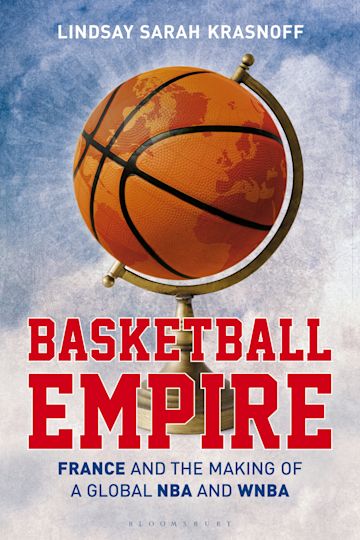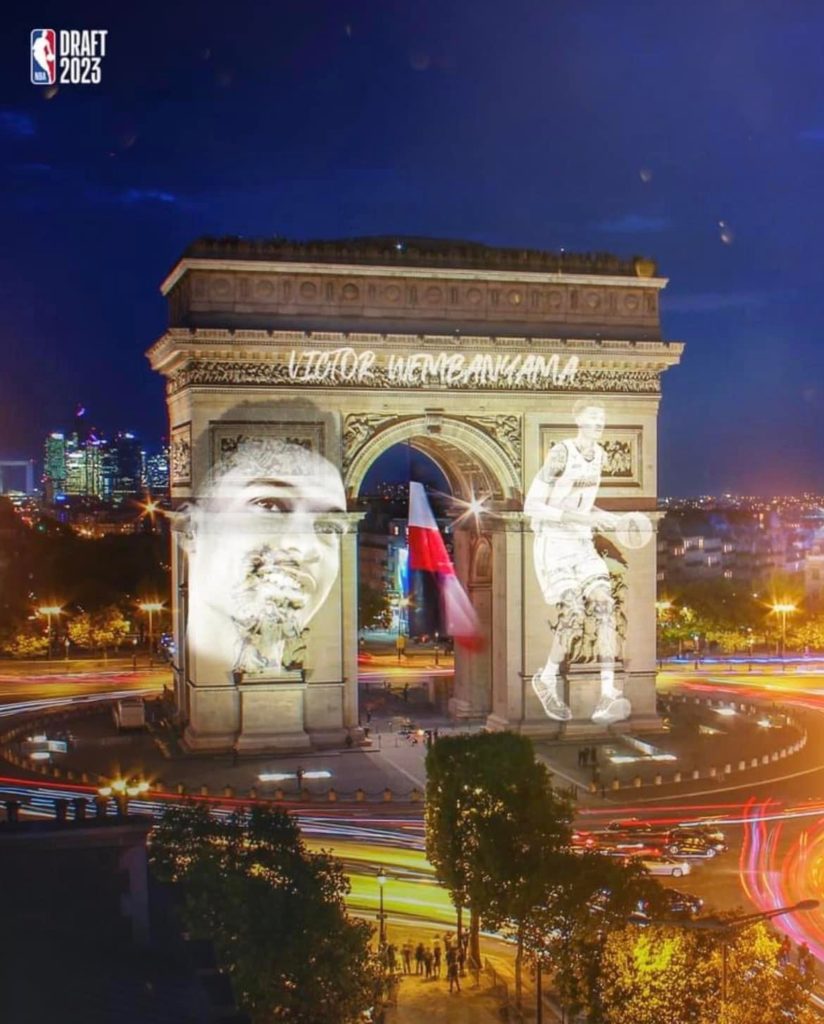Although one of the NBA’s most awe-inspiring rookies is playing some 2,043 miles away from Boston this season, Victor Wembanyama’s story would be vastly different without the role of Massachusetts in France’s basketball fortunes.
By Lindsay Sarah Krasnoff – SPECIAL TO DIGITAL SPORTS DESK
PARIS – The Boston Celtics are primed for the long season ahead, buoyed by reinforcements who bring an international accent to the Bay State. Meanwhile, the league’s buzziest rookie, 19-year-old French unicorn Victor Wembanyama, is already lighting up courts with the San Antonio Spurs. While more than 2,000 miles separate the two, Texans owe Massachusetts for helping to pave the way for Wembanyama and his homeland to emerge as this season’s most spectacular basketball sensation.

It’s a history more than a century old, built on the foundations of informal sports diplomacy, the citizen-to-citizen exchanges that can collectively foster a slam dunk for global understanding. As illuminated in Basketball Empire: France and the Making of a Global NBA and WNBA (Bloomsbury), this evolution is the result of French-American admiration that superseded some of the cyclical, stereotypical transatlantic disdain that can mark popular memory. Instead, this amitié sportive ignited a basketball evolution that’s made the United States’ oldest ally a basketball breeding ground.
And it began 130 years ago on December 27.
Basketball’s first destination once it left American shores was France. Paris, to be exact, where the first basketball game on European soil was played at the newly custom-built YMCA building at 14, rue de Trévise. Today the Paris Y his home to the world’s oldest existing basketball court.
Yet, none of this would be possible without the role played by Melvin Rideout, one of the first young men to play the game that his teacher, James Naismith, invented in 1891. Upon graduation from the International YMCA Training School (now Springfield College), 22-year-old Rideout was dispatched to Paris to serve as the YMCA’s first-ever City of Light-based physical education director. He brought the game’s original 13 rules, but was also a symbolic ambassador, amongst the earliest, of the sporting ties between Massachusetts, the United States, and its oldest ally.
Perhaps even more consequential were the ways that Boston Celtics legends of the 1950s and 1960s imprinted parts of French basketball’s DNA. The story of Bob Cousy is perhaps more well known. His parents immigrated from France in the 1920s, and Cousy grew up speaking his parents’ mother tongue. But Spring 1959, Cousy and Red Auerbach stopped in Paris to run a clinic with the French national men’s team. Then known as Les Tricolors (today they’re called Les Bleus), the team absorbed some of the tactics, techniques, and advice that the Celtic imparted, one post-war link to powering up their style of play.
Far less known until unearthed in the process of researching Basketball Empire are the ways that Bill Russell left a significant mark on the French game. Its one he likely was never fully aware of, for there are no records of Russell doing sports exchanges in country. But it’s one that’s left an indelible mark.
The great defender’s defensive plays and aerodynamic stylings were studiously emulated by some of France’s most legendary players as they cut their teeth one hoop at a time. One was Henry “Gentleman” Fields, one of the earliest U.S. players to mark French hardcourts in the 1960s thanks to the defensive moves he introduced after laboriously seeking to play like Russell. Another was 1970s shot king Jacques Cachemire, who as a boy in Guadeloupe discovered Russell through books and films at an American cultural institute near his house; throughout his career on the French mainland, Cachemire sported a beard in hommage to his Celtics idol. A third was hoops heroine Élisabeth Riffiod, who similarly studied game tape of Russell’s plays in order to amp-up her defense and land the one-handed jump shot (the first Frenchwoman to do so); Riffiod finally met the Boston great when her son, Boris Diaw, competed in NBA Summer League. “Speaking of Bill Russell, for me, it’s something very strong emotionally because he’s always been my idol,” Riffiod said for Basketball Empire.
These are all examples of technical and cultural exchange through sports diplomacy. As part of French basketball’s DNA, they highlight the role and importance of individual citizens on both sides of the Atlantic, and how in a globalizing sports world, one person can have far-ranging, long-reaching impacts.
France has quietly developed and exported a never-ending stream of defensive specialists to North American hardcourts, from Tariq Abdul-Wahad (the first French in the NBA, 1997) to three-time NBA Defensive Player of the Year Rudy Gobert and most recently Wembanyama. Today it is a basketball breeding ground, a pipeline for talent, a lineage that includes the Celtics’ Jérome Moiso (2000-01), Guerschon Yabusele (2016-19), and Evan Fournier (2021).

No other country outside of North America has sent more players to the NBA than France, according to the NBA. They’ve also sent a strong string of talents to the WNBA, too, including the thrilling “wow” factor of French wizard Marine Johannès with the New York Liberty. And, if you’re a fan of college basketball, you witnessed South Carolina’s 100-71 defeat of Notre Dame to tip off the 2023-24 regular season in Paris, a historic first ever for an NCAA opening night on foreign soil.
And hidden amidst this history is the surprising role played by Massachusetts in helping build France’s 21st century hoops haven–one that will be on display at the Paris 2024 Olympic Games.
Lindsay Sarah Krasnoff is a historian and consultant, author of Basketball Empire: France and the Making of a Global NBA and WNBA, Adjunct Instructor at New York University’s Tisch Institute for Global Sport, and director of the FranceAndUS sports diplomacy project.
